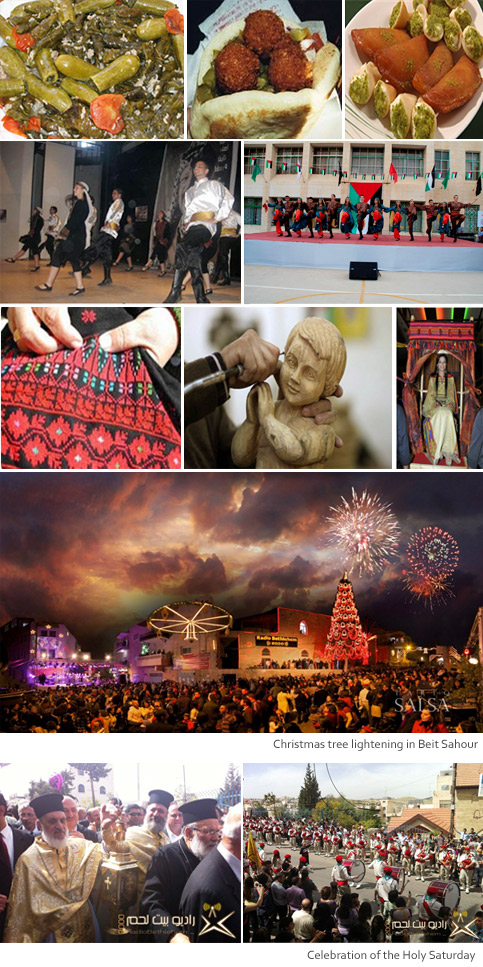Geographical Location and Population
Beit Sahour is a Palestinian city in the Bethlehem Governorate located at 1.5km east of Bethlehem City. Our city is full of significant historical and Biblical sites; it is known as the city of the Shepherds’ Field. According to the Palestinian Central Bureau of Statistics (PCBS), the total population of Beit Sahour in 2007 was 12,367; of whom 6,202 are males and 6,165 are females. There are 2,775 households living in 3,517 housing units.
Beit Sahour is located at an altitude of 649m above sea level with a mean annual rainfall of 454mm. The average annual temperature is 16.6 o C, and the average annual humidity is about 60.3 percent (ARIJ GIS, 2009).
History
The origin of the name Beit Sahour (the house of vigilance) reputedly stems from the Canaanite words "Beit" meaning place, and "Sahour" meaning night watch, which reflected the importance of the area for shepherds. The land provided the flocks with good grazing during the day and safety in its numerous caves at night.
The city dates back to 1925, and its residents originate from several Arab countries including: Jordan, Egypt, and Syria. (Arij, 2010).
Intangible Cultural Heritage
We, at Beit Sahour, believe that our intangible cultural heritage is a reflection of our Palestinian Identity. That is why we, in cooperation with the Center for Cultural Heritage Preservation, have developed an action plan which places an emphasis on the Revitalization of the Historic City. This plan won first prize for Architectural Heritage of Arab Countries in the city of Doha, Qatar, in 2010.
The municipality has been successfully implementing annual cultural and religious events celebrating the rich history and culture of Beit Sahour: the Faquos Festival, Beit Sahour Nights Festival, Shepherds’ Nights Festival, Christmas Tree Lighting and Peace Procession. All these events are facets of Beit Sahour’s intangible cultural heritage because they represent traditions inherited from our ancestors. During these festivals traditional dancing is presented, traditional Arabic food is displayed and enjoyed, Arabic music is played. We believe that participating in such activities and







Follow ICCN